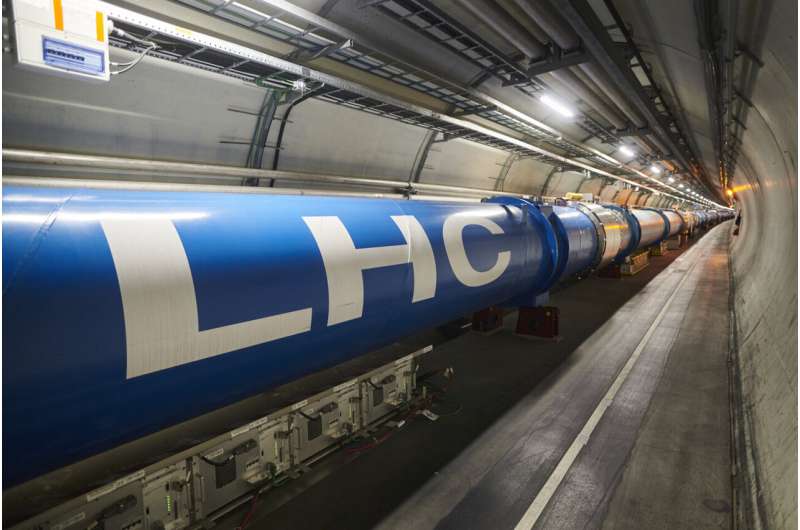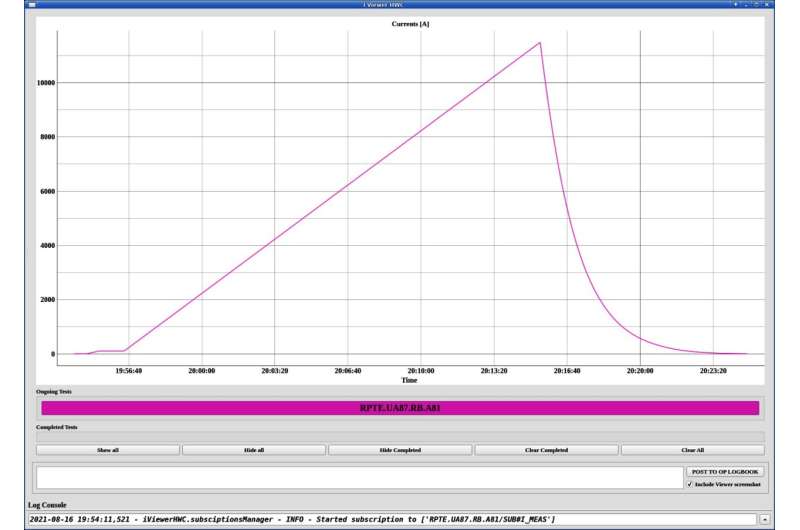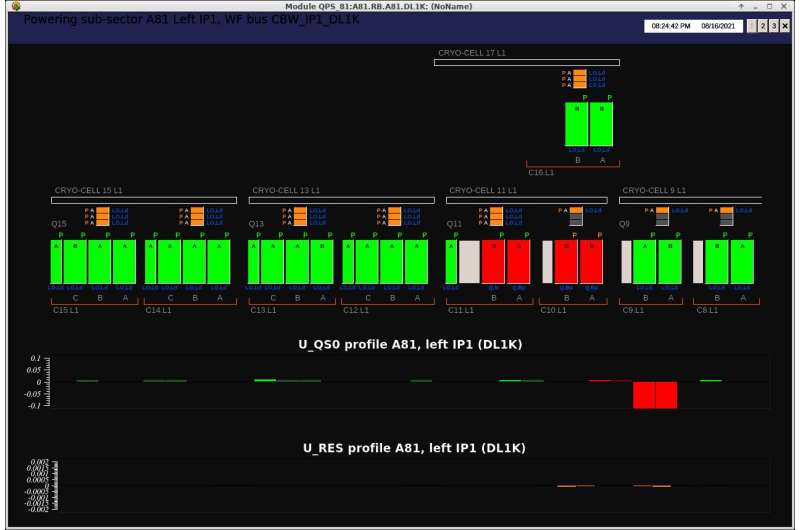'Magnet training' at the LHC

When the Large Hadron Collider (LHC) begins Run 3 next year, operators aim to increase the energy of the proton beams to an unprecedented 6.8 TeV. This means the thousands of superconducting magnets, whose fields direct the beams around their trajectory, need to grow accustomed to much stronger currents after a long period of inactivity during LS2. This is done through an ongoing "magnet training" process.
Matteo Solfaroli, part of the LHC Operations group, oversees the coordination of the hardware commissioning for the LHC. His job involves training every single chain of magnets (called a circuit), by gradually bringing them up to their nominal currents. "This is a large project because we have about 1600 superconducting circuits in the LHC, ranging from a 60-amp nominal current to 13 kiloamps," he says. "These are really big circuits, and we need to test them all individually—we are talking about around 12 000 tests."
If the magnets were not trained, the high currents would cause them to undergo a random phenomenon called "quenching," where a small section of magnet coil overheats. The magnets are designed to stop the coil burning away by distributing this heat across the whole magnet. However, this results in warming up the magnet and some of its neighbors, causing them to go above critical temperature, where they are highly resistive and unable to provide the required magnetic field.
After a quench has happened, the magnet must be cooled back to cryogenic conditions before a current can be run again. The Powering Tests team repeats the process of current increase until the magnets can withstand their nominal current without quenching.

This works because the magnets have "memory."
"The magnet adjusts to the new current level," Solfaroli said. It's a similar principle to any other sort of training: if you have ever started running, you will know that with each session you are able to run for longer without stopping—until you reach a point where you can run for a sustained period. Muscle memory increases your endurance. Similarly, magnet memory increases their endurance to withstand high currents for sustained periods without quenching.
The eight largest LHC dipole magnet circuits need to sustain a current of 11 500 amps. "The problem is that the quench phenomena can happen in any of the magnets," said Solfaroli. "For the small circuits, quenching is not a particular problem because this is a fast recovery. But for the main dipole circuits, the recovery time is between eight and twelve hours."

The whole process: ramping up the current for each circuit; quenching; cooling it down and repeating is long. Combined with all the testing and other processes, the whole magnet preparation can take eight or nine months—like training to run a marathon.
The Powering Tests team expects the magnets to be fully trained by the end of this year.
Provided by CERN





















